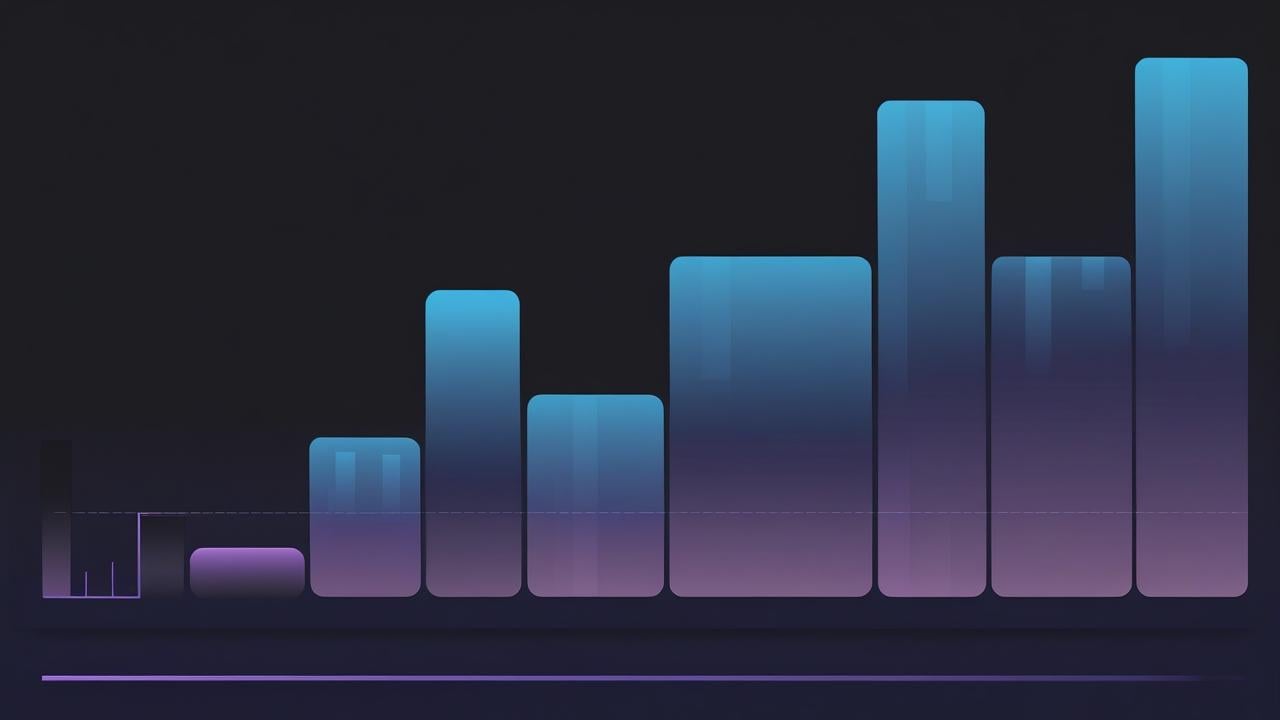Many B2B marketing leaders I speak with fall into one of two traps when trying to measure the ROI of their SEO campaigns. Either they’re counting their own branded keywords as SEO wins, or they’re skipping pipeline and revenue tracking altogether because attribution is messy.
Inevitably, I hear something like, “Ken, you don’t understand. Attribution is imperfect, so we don’t even bother,” or, “We’re just focused on growing top-of-funnel website visitors from organic search right now. We’ll figure out converting leads later.”
To which I say: shoulder shrug and heavy sigh.
These folks don’t live in the same world I do.
I’ve spent my entire adult life obsessing over systematically improving organic search sourced revenue for B2B brands.
Connecting spend and resource allocation to real business outcomes is what drives me, even when it’s messy. Especially when the numbers aren’t skyrocketing as fast as we’d like.
SEO should ultimately be about revenue. Just like every other marketing channel.
If you’re aligned with that philosophy or if leadership is breathing down your neck asking how a few keywords or on-page tweaks will boost the bottom line, then this article is for you.
You’ll learn how SEO drives revenue outcomes and how to measure the effectiveness of your campaigns.
How To Measure SEO ROI TL;DR
For those of you who have 5 back to back meetings today here’s the high level on measuring SEO ROI:
- SEO Drives Revenue Beyond Traffic. SEO drives revenue by acquiring, retaining, and maximizing customer value while lowering acquisition costs. It extends beyond visitor traffic to act as a strategic growth channel.
- Calculate SEO ROI. Use the formula: SEO ROI = ((Value of organic conversions – Cost of SEO investments) / Cost of SEO investments) × 100 to measure SEO’s financial impact.
- Challenges in Connecting SEO to Revenue. Connecting SEO to revenue is challenging due to attribution across touchpoints, limited historical data, branded versus non-branded traffic distinction, and tool configuration issues.
- Actionable SEO Strategies for Growth. Grow with SEO by cleaning up technical SEO, targeting high purchase intent keywords, aligning content to buyer journeys, creating strategic assets, and monitoring performance for compounding gains.
Use The SEO ROI Calculator

And for the rest of us who have time, I'm stoked to be able to present these nugget gems on using SEO to drive new revenue for your business and how to calculate SEO ROI.
Time to dive into the fascinating and exciting world of SEO led growth.
How SEO Drives Revenue
If you look at SEO as a hack or gimmick to drive traffic, you miss out on its greatest potential.
You need to see SEO as an integral part of growth marketing that can be leveraged to grow your bottom line.
Here are a few ways it can help do just that:
Powerful Customer Acquisition Channel
One of the most powerful ways SEO can help drive revenue is by helping you acquire new customers. This means shifting from using SEO simply as a traffic generation channel to a customer acquisition channel. Doing this means fine-tuning your SEO and content strategies to target people more likely to become customers.
One way to do this is to focus on bottom-of-the-funnel (BoFu) content more, as it uses high purchase intent keywords. This way, SEO becomes more than just a marketing channel but lends itself to sales as well.
Another way to use SEO to drive more sales is to use it to rank critical pages on your site that drive the most sales. Usually, this involves optimizing for branded queries as well.
Besides helping you drive relevant traffic to your website, SEO also contributes to revenue generation by helping reduce your customer acquisition costs (CAC). This is because SEO is more cost-effective than paid CAC channels. It’s also because SEO compounds over time without you having to increase costs proportionally. In other words, it continues bringing in results without you having to inject more resources.
Improves Customer Retention Rates
The SaaS business growth model is built around customer retention. The more customers you manage to retain, the more revenue you generate.
And SEO done right can help boost your customer retention rates.
A couple of ways SEO does this include:
- Builds trust through creating custom, helpful content
- Boosts your brand image
- Can help establish you as an authority in your industry
SEO also helps you gain insights into customer buying behavior. The insights you gain help you create marketing and sales strategies that improve the efficiency of your RevOps, resulting in a growing bottom line.
For SEO to help with retention, your content strategy must also cater to customers. It must enhance your product education strategy.
Increases Customer Lifetime Value CLTV
Besides helping you retain customers, SEO also helps increase your customer lifetime value (CLTV). This is the revenue expected from each customer over some time. High CLTVs are an indication of how profitable your business is as it shows projected revenue over time.
How does SEO help increase your CLTV?
If you design your SaaS SEO strategy to target high-intent customers who are likely to be long-term users of your product, your SEO strategy will attract customers with high CLTV.
Reputation Management and Brand Building
Reputation management and brand image are critical elements to growing a sustainable SaaS brand. This is because a positive brand reputation results in the following:
- Customer loyalty
- High customer confidence in your brand and product
- Customers turning into brand ambassadors
All these lead to an increase in sales and a boost in your revenue.
SEO Supports Other Sales and Marketing Channels
Another way in which SEO helps drive revenue is by supporting other sales and marketing channels. Because it’s such a broad field, it has touchpoints in almost all other disciplines that help you generate revenue. Examples include search engine advertising (SEA), affiliate marketing, social media marketing, public relations (PR), and many more.
Especially if you’re a large established brand, your enterprise SEO strategy helps make your digital marketing and sales assets more visible on other channels, leading to more sales.
How to Measure SEO ROI
Measure SEO ROI by applying this formula: SEO ROI = ((Value of organic conversions - Cost of SEO investments) / Cost of SEO investments) × 100.
Calculate organic conversions from tracked revenue, subtract your SEO expenses, divide the difference by total expenses, and multiply by 100 to express it as a percentage.

While the formula to determine ROI may look simple, you need to do some math to calculate the total value of your organic conversions and SEO investment.
Here’s how to do that:
Value of organic search sourced conversions
You can easily track the value of your organic conversions in Google Analytics (GA4) by setting up ecommerce tracking. This will give you access to many metrics you need to determine the value of your organic conversions through the “Key Events” section of your GA4 view.
You can then segment your report according to the particular channel you want to draw data for. In this case, our channel would be organic traffic, and the key metric would be revenue.
This is a simplistic overview of how to get the value of organic conversions, and it can vary from business to business.
For businesses built on lead generation, attributing revenue to traffic may be more complicated. To make it easier, you can leverage form tracking. This will help you better understand where your visitors came from and the activities they performed on your site. It will also make it easier to attribute the revenue generated by your organic traffic.
Cost of SEO investment
This is easier to calculate and mainly includes in-house SEO expenses (including tools) or agency expenses if you outsource. Make sure to include everything that goes into planning and executing your SEO strategy.
💲 Technology costs
This will mostly be different software and programs you use to prep your SEO campaign, like technical audit and keyword rank tracking tools. All of these need to be taken into consideration.
💲 3rd-party costs
This includes whether or not you’re using an outside agency, partner, or contractor to support your SEO efforts. You've got to factor in the cost of any vendors or consultants to get the full picture.
💲 Labor costs
If you’re managing an internal marketing team, don’t forget to include the labor costs of your employees. They count.
Let's look at the formula in action with a hypothetical example
Armed with this information, you can now calculate your SEO ROI using our simple formula from earlier:
SEO ROI = (value of organic conversions - cost of SEO investments)/cost of SEO investments*100
For the sake of this example, let’s say the value of your organic conversions is $70,000, and the cost of SEO investment is $10,000. Your SEO ROI will be:
($700,000-$10,000)/$10,000 = 69
SEO ROI =69*100 = 6900%
While this may be a hypothetical example, it’s common for SEO to have astronomic ROIs. Which is why it's a great space to invest in as one of your primary marketing channels.
Challenges of Connecting Your SEO Efforts to Revenue
One reason many brands don’t align SEO with revenue generation is that it can be challenging to connect the two. Some of the challenges include the following:
Lack of Tools and Correct Configurations
Attributing revenue to SEO is a huge challenge as it requires sophisticated tools that require proper configurations to pull the right data. Many businesses may not have the tools or skilled personnel to use them in-house. In this instance, outsourcing to a SaaS SEO agency would be your best option, especially since you’ll have to regularly upgrade both tools and skilled personnel.
Attribution is a Mammoth Task
Attributing revenue to SEO is a huge task that most marketers would rather not touch. This is because SEO touches all parts of the customer journey, and users have many touchpoints with your content before converting.
While not perfect, the data-driven attribution (DDA) attribution model in GA4 provides one of the most efficient ways to get attribution across multiple funnels and channels.
Lack of Historical Data to Analyze
If you’re a startup, one of the challenges you’ll face is the lack of historical data to analyze to help you determine your SEO ROI. This is compounded by the fact that it takes time for SEO to kick in and start bringing returns on the investments you made.
The Dichotomy Between Branded and Non-branded Search
Branded search refers to searches that include your brand name or product name. This is usually done by people who already know your brand and product. Non-branded search, on the other hand, refers to generic searches made by people using keywords that don’t contain your brand.
While branded queries are organic, they shouldn’t be attributed to SEO, as the searcher already knows about your brand.
Calculating the ROI of SEO, therefore, becomes a challenge due to the difficulty of segmenting branded vs. non-branded organic traffic with conversion data.
So, should you give up on calculating SEO ROI?
Not at all.
Knowing the role SEO plays in your revenue generation is an essential aspect of your marketing and business operations. It can also help you know how best to allocate your marketing resources.
How to Use SEO to Grow Your Business
We’ve established that SEO is a foundational part of growth, and we’ve even outlined the role of SEO in growth marketing. But how exactly can you use SEO to grow your business? That right there is the million-dollar question.
Your growth marketing and SEO strategies should be unique to your brand and your customers. But no matter what you’re selling or who you’re selling it to, these SEO tips should help get you on the road to growth:
1. Clean Up Your Technical SEO
If SEO is a foundation, technical errors are cracks in the concrete. Any good SEO strategy should start with shoring up that foundation.
Here's what to do to get your technical SEO in order:
- Make sure all pages are indexed.
- Confirm analytics and tracking are installed and functioning.
- Redirect 404s.
- Check any alerts in Google Search Console.
- Implement schema.
- Test for mobile friendliness.
2. Map Your Website
Neither SEO nor growth marketing benefits from slapping content on your site. Every page you add should be strategic. This includes:
- Mapping keywords: Ensure you map relevant keyword targets to every page of your website so you know what to optimize for.
- Mapping content: Strategically add content to your sitemap so that new content supports the rankings of existing content.
- Mapping the user journey: Understand how customers move through the website on their path to purchase so you can use SEO to smooth out the user experience.
Each of these maps is critical for SEO, but they also bolster growth marketing efforts because no matter where the users come from, they’ll have a positive experience on your website and, therefore, with your brand.
3. Create New Content
Take a growth marketing lens to all the content you create. Test headlines, copy, and even CTAs to see what works. In this way, growth marketing can actually make your SEO better.
Likewise, SEO can also enhance your growth marketing because you can create content that plugs into your campaigns. Need a new landing page for a paid campaign? Take SEO into account while you create it. Want to generate sustainable traffic but the keyword is pricey? Try ranking organically instead.
4. Optimize Existing Content
Optimizing your content ensures that it’s always performing, whether that’s making tweaks to get more traffic or boosting conversions. Conversion rate optimization (CRO) is an important part of SEO — and one that’s valuable in growth marketing, too. Through CRO, you’ll make strategic changes to your site to increase the rate at which your target customers convert through both SEO and growth marketing. Win-win, right?
5. Monitor and Mitigate
The reality is that neither SEO nor growth marketing are ever over. True success with SEO in growth marketing is something of a wash, rinse, repeat of the tactics you know work, plus testing and monitoring to make those tactics even better.
Conduct regular SEO audits, resolve any issues, and keep your website as clean and functional as possible to see both your SEO and your growth marketing soar.
Measuring Your SEO ROI Makes or Breaks Your Success Long Term
The ROI of SEO isn’t just a nice-to-have—it’s the lifeblood of a long-term, successful strategy.
Done right, SEO isn’t just another marketing channel; it’s your 24/7 salesperson, delivering compound results over time. Miss this, and you’re leaving serious revenue on the table.
SEO is a long game. It’s not a quick-hit ad campaign where results pour in overnight. It’s more like planting an orchard—you need to water it consistently before you start harvesting the fruit.
The payoff? Way sweeter (and more sustainable) than you imagined.
Wondering how your SEO efforts are stacking up? Or trying to make sense of your campaign’s ROI?
Let’s talk. Seriously, hit us up. We’d love to help you get this dialed in.




